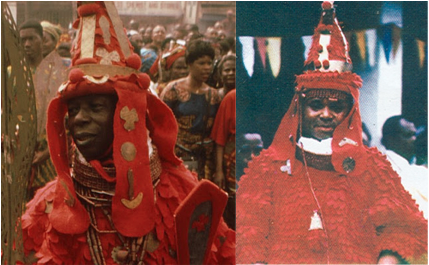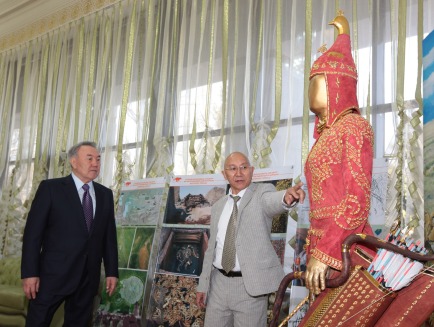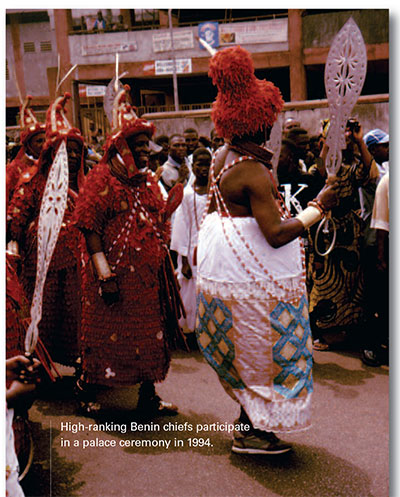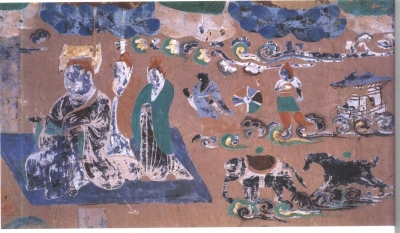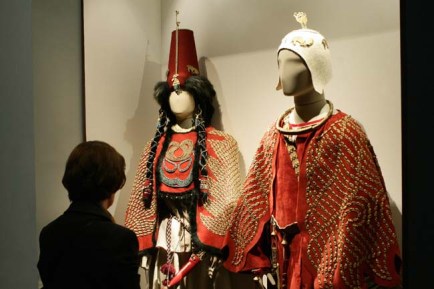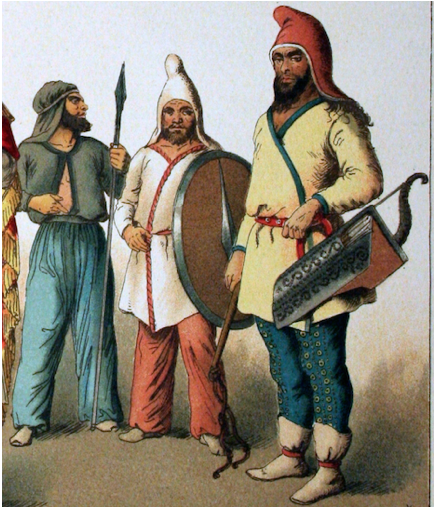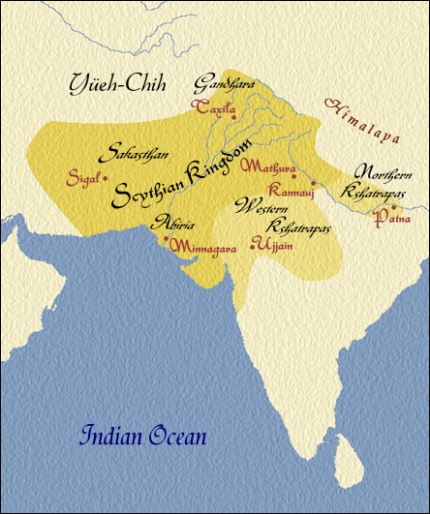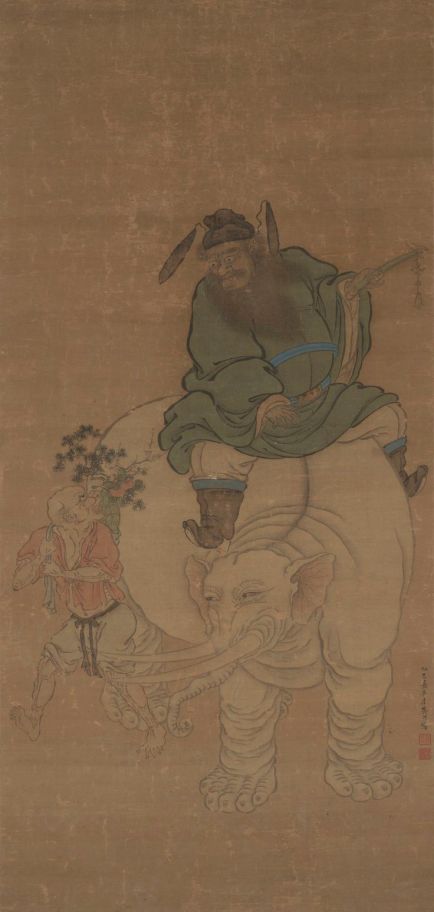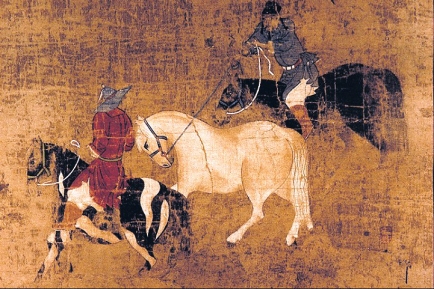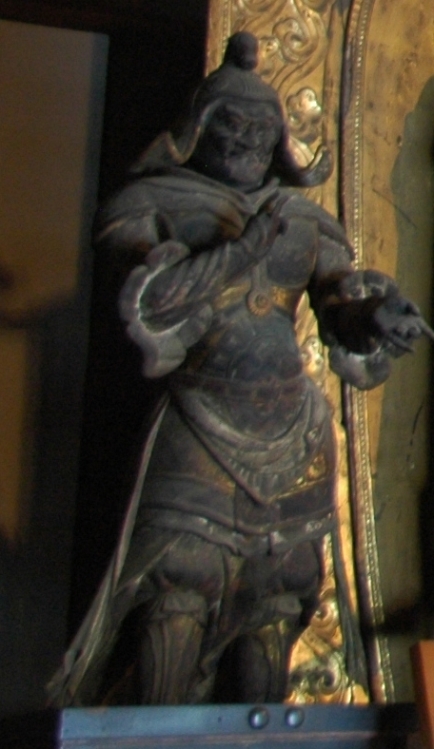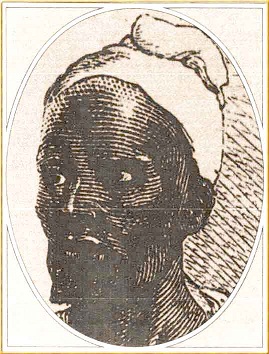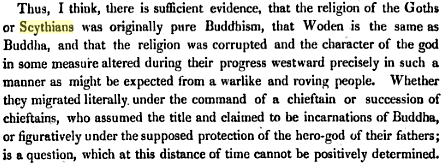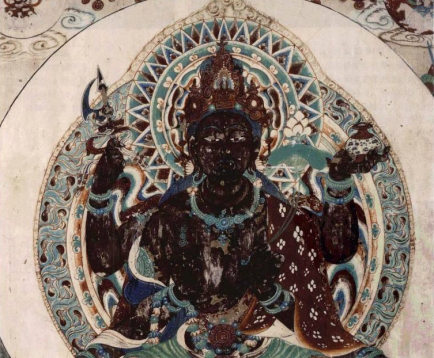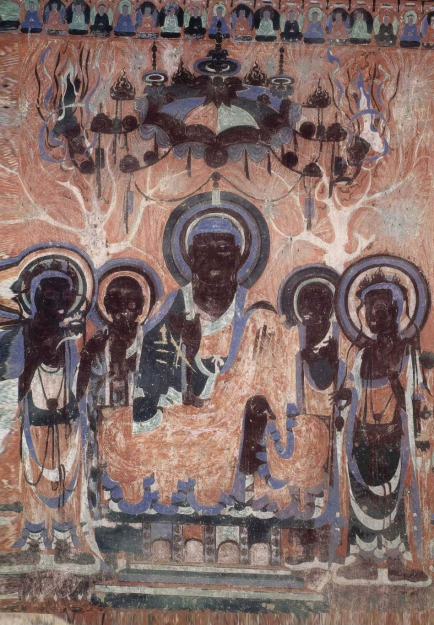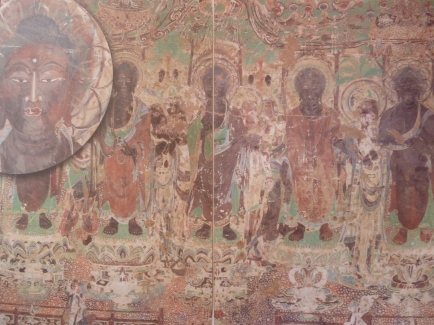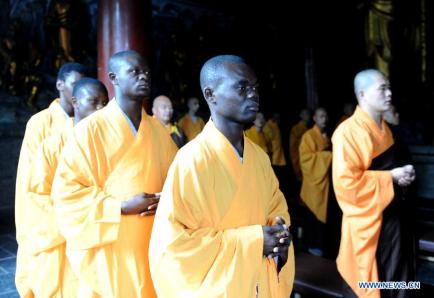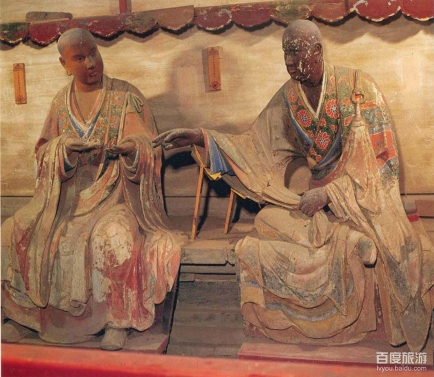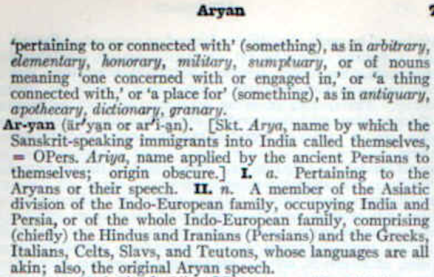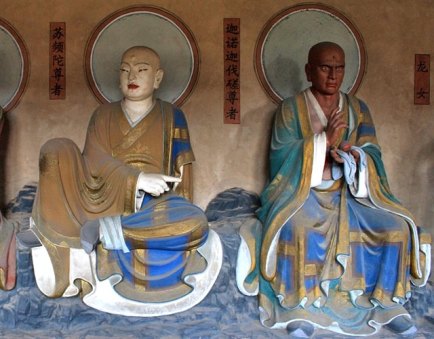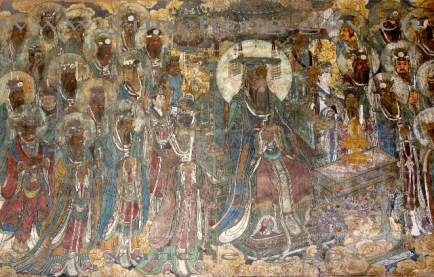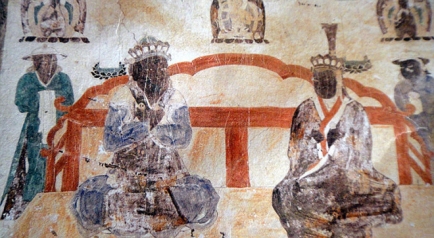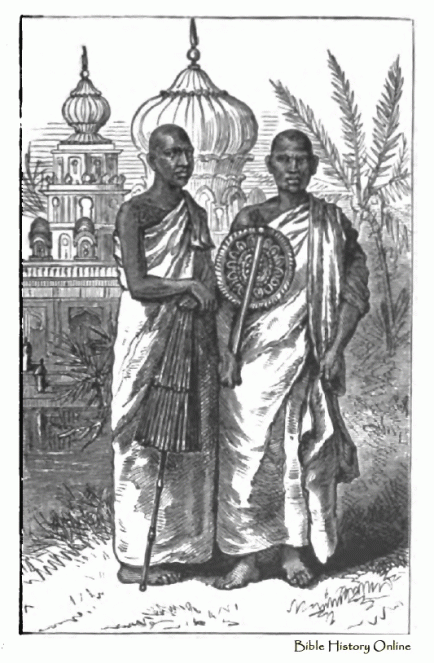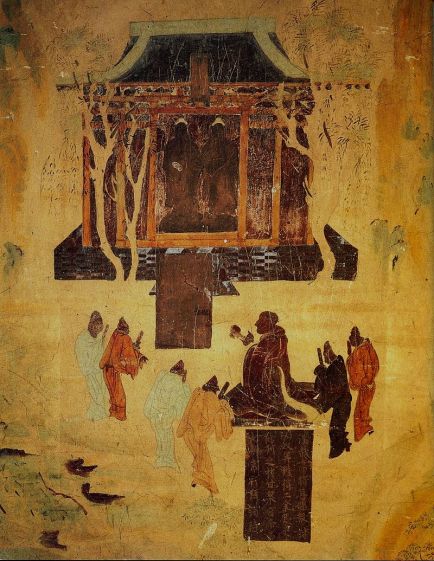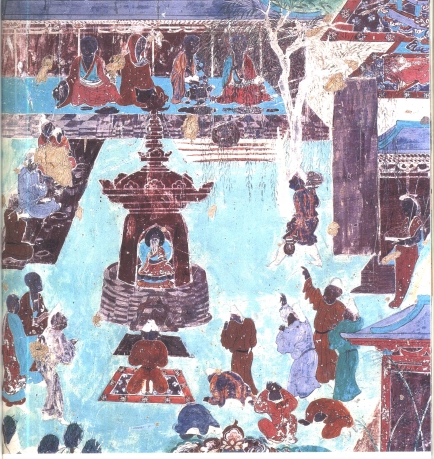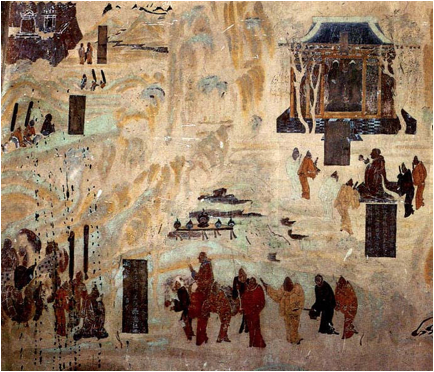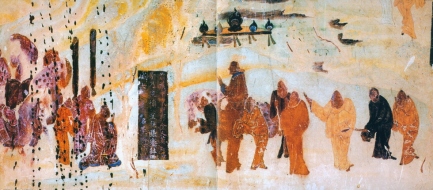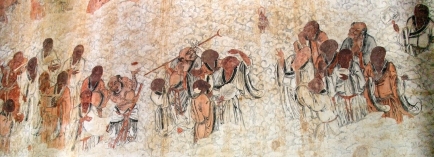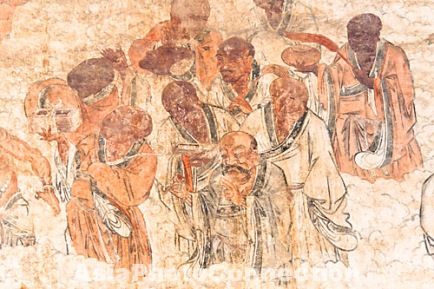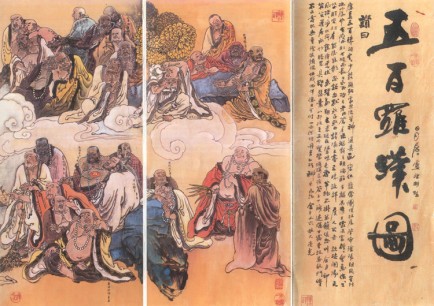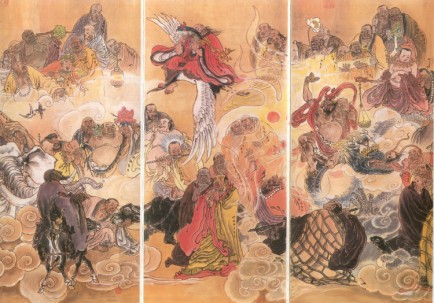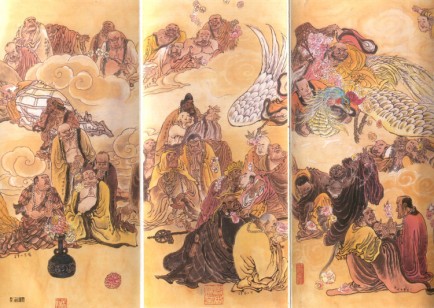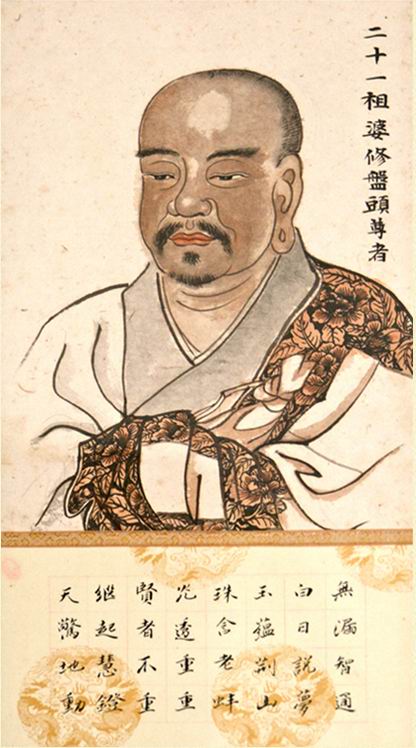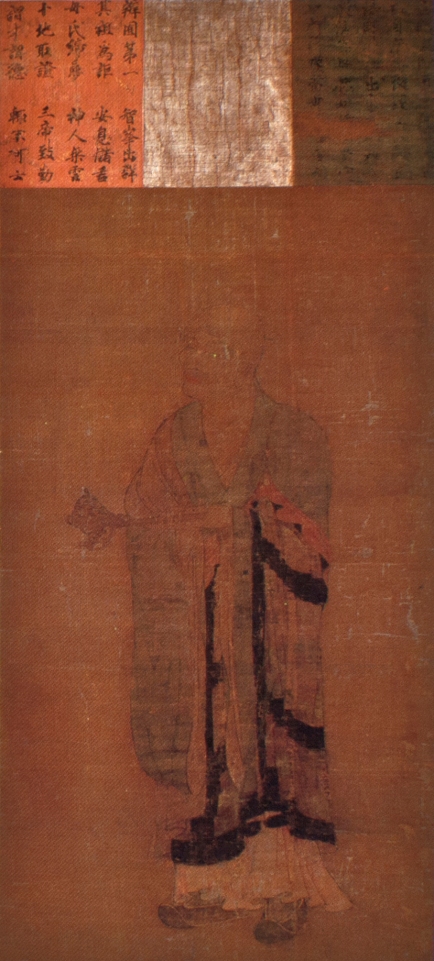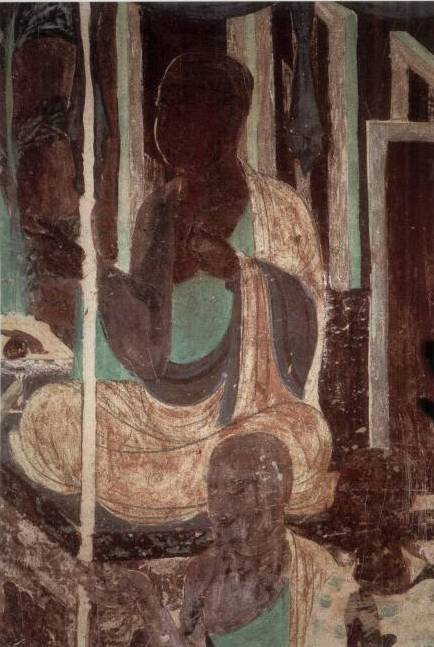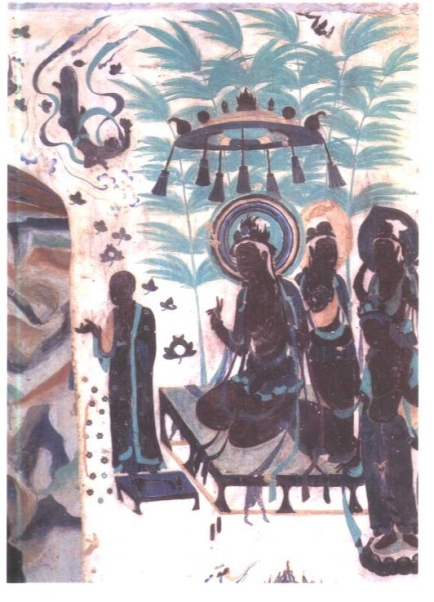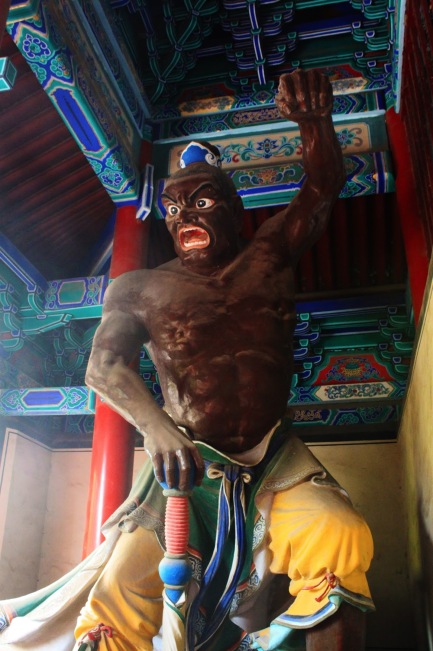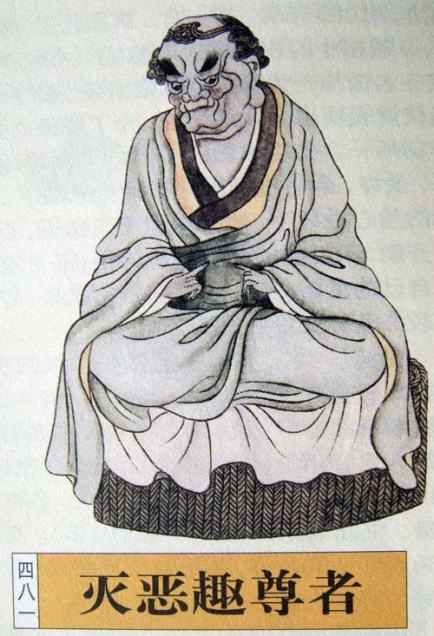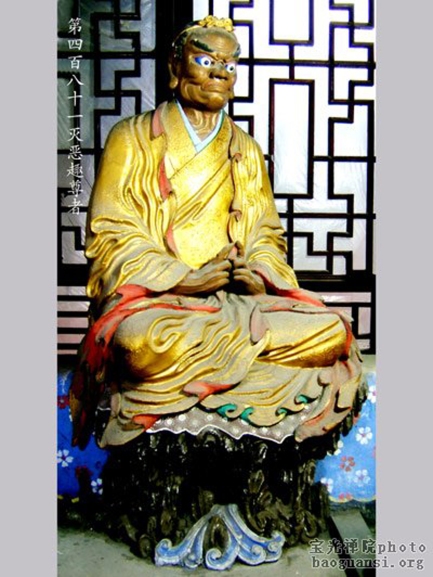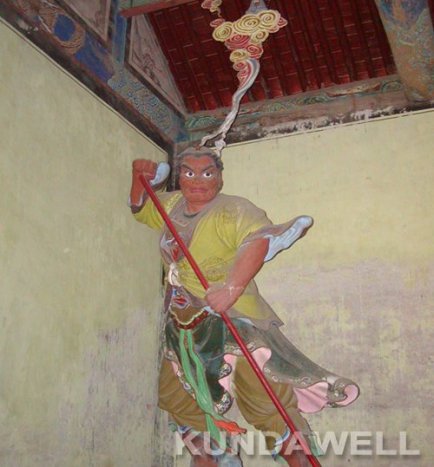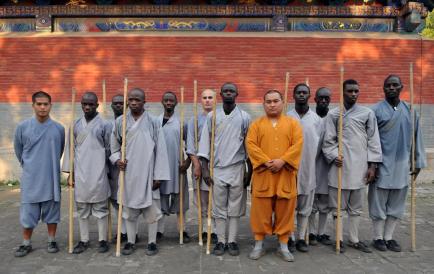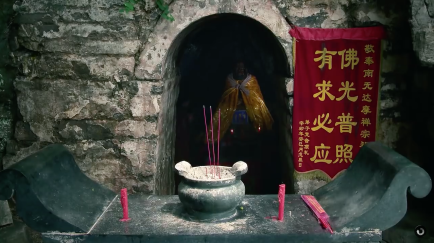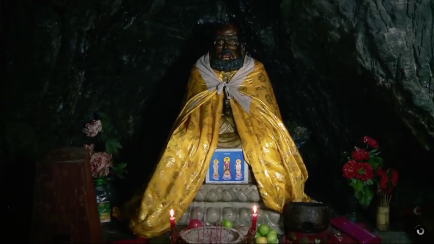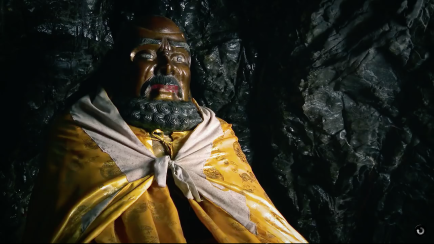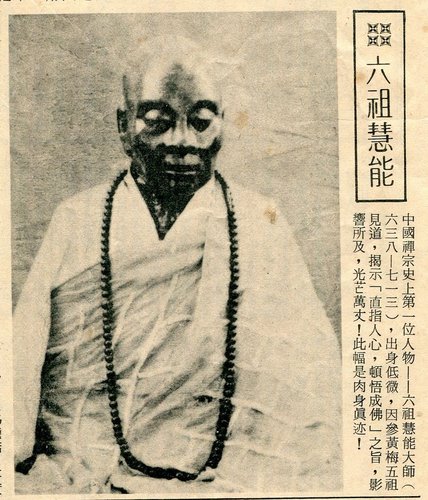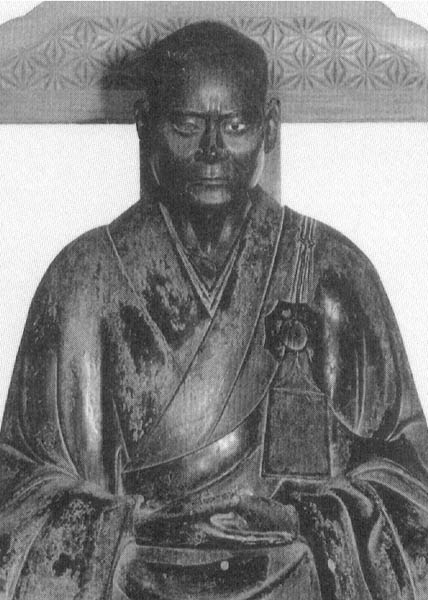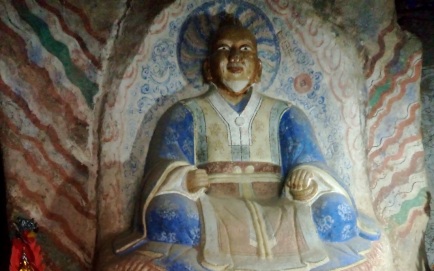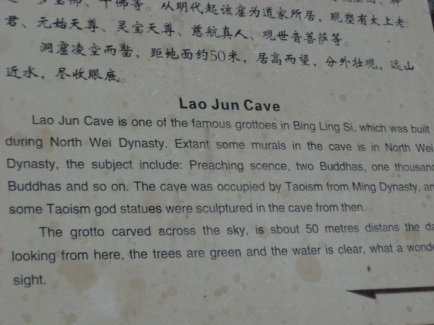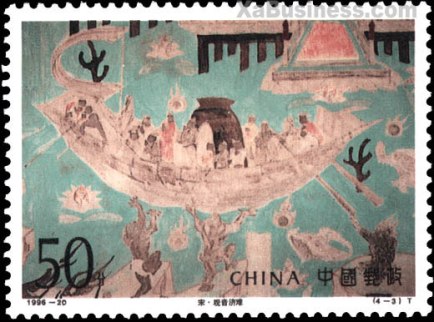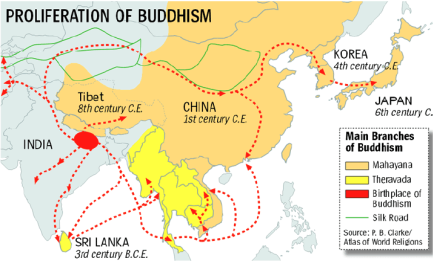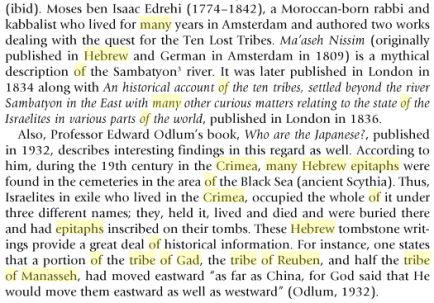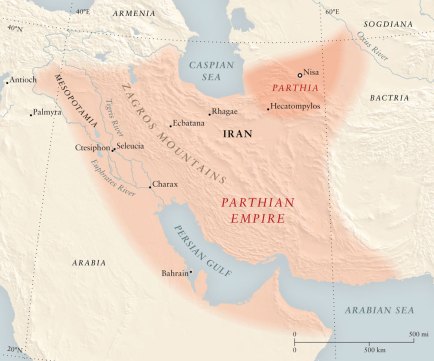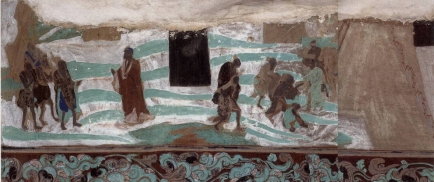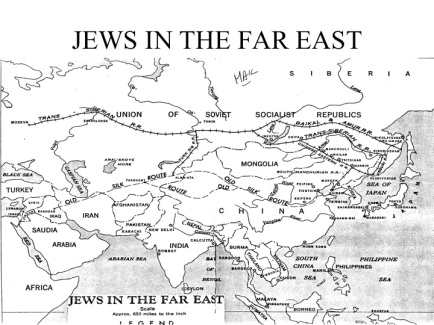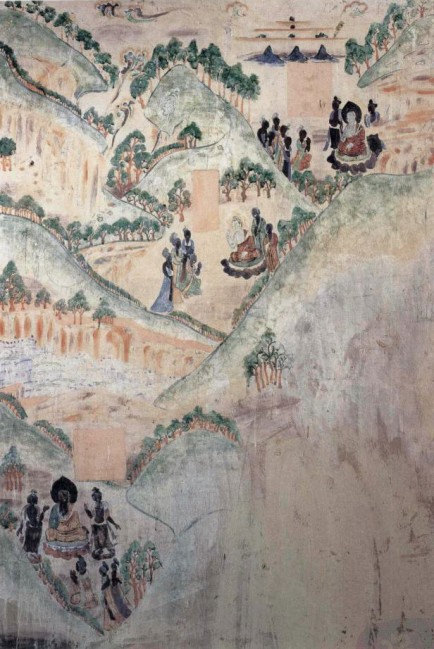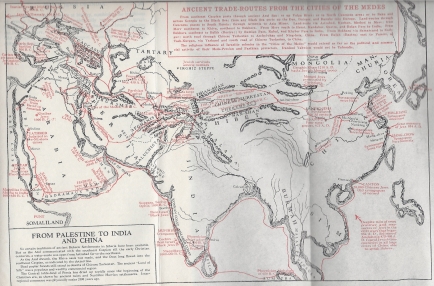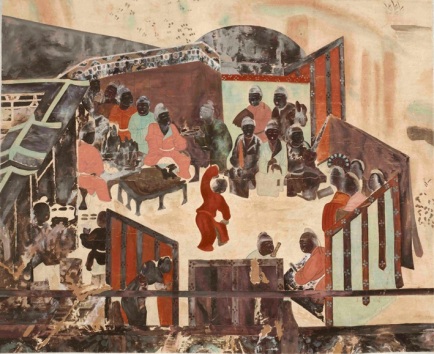Article from Aria Nasi Research: Black Buddha & The Israelite Buddhists, traces the Israelite identify of the buddhas throughout antiquity
ALL of the heathen nations were complicit in hiding the identify of the Israelites. The truth cannot and will not be hid according to prophesy.
Luke 8:17 | For nothing is secret, that shall not be made manifest; neither any thing hid, that shall not be known and come abroad.
2 Esdras 16:70 | For there shall be in every place, and in the next cities, a great insurrection upon those that fear the Lord. 71They shall be like mad men, sparing none, but still spoiling and destroying those that fear the Lord. 72For they shall waste and take away their goods, and cast them out of their houses. 73Then shall they be known, who are my chosen; and they shall be tried as the gold in the fire.
Psalm 83
1 (A Song or Psalm of Asaph.) Keep not thou silence, O God: hold not thy peace, and be not still, O God.
2 For, lo, thine enemies make a tumult: and they that hate thee have lifted up the head.
3 They have taken crafty counsel against thy people, and consulted against thy hidden ones.
4 They have said, Come, and let us cut them off from being a nation; that the name of Israel may be no more in remembrance.
5 For they have consulted together with one consent: they are confederate against thee:
6 The tabernacles of Edom, and the Ishmaelites; of Moab, and the Hagarenes;
7 Gebal, and Ammon, and Amalek; the Philistines with the inhabitants of Tyre;
8 Assur also is joined with them: they have holpen the children of Lot. Selah.
9 Do unto them as unto the Midianites; as to Sisera, as to Jabin, at the brook of Kison:
10 Which perished at Endor: they became as dung for the earth.
Nehemiah 4:8 | And conspired all of them together to come and to fight against Jerusalem, and to hinder it.
Article reposted from Aria Nasi Research
See original article for images
Black Buddha & The Israelite Buddhists
In this article, we will identify the Buddha and early Buddhist as descendants of Hebrew Israelites.
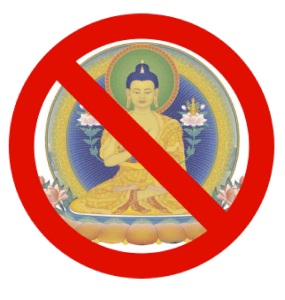 It is not the intention of the information presented to encourage or promote the practice of the buddhist religion, as it is extremely pagan. However, an understanding of the history of the originators of Buddhism will help us to better understand the historical Israelite presence and influence in the Far East.
It is not the intention of the information presented to encourage or promote the practice of the buddhist religion, as it is extremely pagan. However, an understanding of the history of the originators of Buddhism will help us to better understand the historical Israelite presence and influence in the Far East.
HOW DO WE KNOW BUDDHA AND BUDDHIST WERE ISRAELITES?
Perhaps unknown to the majority of people, the original Buddha and Buddhists were descendants of the Hebrew Israelites. Despite the many extreme pagan elements of the Buddhists faith, it remains a fact that it was a religion developed by Hebrew Israelite descendants who had migrated all over the world. A brief review of Israelite history will help us to better understand how there could possibly exist any connection between the ancient Israelites and the pagan Buddhists of the East. I assure you that after a brief overview of the post-Assyrian-captivity history, with the use of some visual aids and maps, it will be very clear to see that the early Buddha and Buddhists were indeed Hebrew Israelites (although pagan/gentile in spirituality).
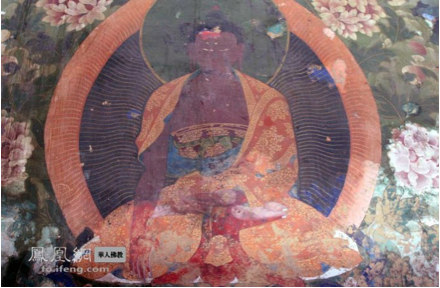
“Thus wast thou decked with gold and silver; and thy raiment was of fine linen, and silk, and broidered work; thou didst eat fine flour, and honey, and oil: and thou wast exceeding beautiful, and thou didst prosper into a kingdom. And thy renown went forth among the heathen for thy beauty: for it was perfect through my comeliness, which I had put upon thee, saith the Lord God.” – Ezekiel 16:13-14

Thou hast also taken thy fair jewels of my gold and of my silver, which I had given thee, and madest to thyself images of men, and didst commit whoredom with them…” – Ezekiel 16:15-17
“Yet the LORD testified against Israel, and against Judah, by all the prophets, and by all the seers, saying, Turn ye from your evil ways, and keep my commandments and my statutes, according to all the law which I commanded your fathers, and which I sent to you by my servants the prophets.” – 2 Kings 17:13
“They said, Turn ye again now every one from his evil way, and from the evil of your doings, and dwell in the land that the LORD hath given unto you and to your fathers for ever and ever” – Jeremiah 25:5
“Thus saith the LORD of hosts, the God of Israel, Amend your ways and your doings, and I will cause you to dwell in this place.” – Jeremiah 7:3
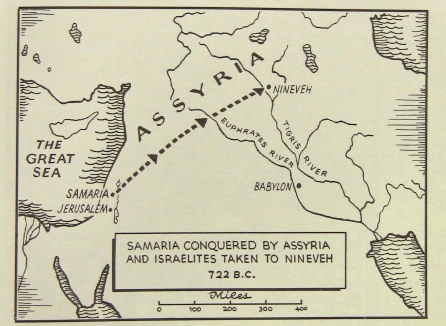
The majority of the Israelite Buddhists were the product of the Northern Kingdom of Israel’s betrayal of the worship of the true God, I AM (Exodus 3:13-15, Ezra 9:7). As a result of their adoption of the worship of new gods, as introduced to the Israelites by King Solomon and the nations of his gentile wives, the Northern Kingdom of Israel was removed from their homeland, (“the sight/focus” of the Most High God,) by the ancient Assyrian nation around 721 BC.
“For the children of Israel walked in all the sins of Jeroboam which he did; they departed not from them. Until the LORD removed Israel out of his sight, as he had said by all his servants the prophets. So was Israel carried away out of their own land to Assyria unto this day.” – 2 Kings 17:22-23
“In the ninth year of Hoshea the king of Assyria took Samaria, and carried Israel away into Assyria, and placed them in Halah and in Habor by the river of Gozan, and in the cities of the Medes.” – 2 Kings 17:6
“And the God of Israel stirred up the spirit of Pul king of Assyria, and the spirit of Tilgathpilneser king of Assyria, and he carried them away, even the Reubenites, and the Gadites, and the half tribe of Manasseh, and brought them unto Halah, and Habor, and Hara, and to the river Gozan, unto this day.” – 1 Chronicles 5:26
“And I said after she had done all these things, Turn thou unto me. But she returned not. And her treacherous sister Judah saw it.” – Jeremiah 3:7
“And the LORD said, I will remove Judah also out of my sight, as I have removed Israel, and will cast off this city Jerusalem which I have chosen, and the house of which I said, My name shall be there.” – 2 Kings 23:27
“And I will forsake the remnant of mine inheritance, and deliver them into the hand of their enemies; and they shall become a prey and a spoil to all their enemies” – 2 Kings 21:14
Since both the Kingdoms of Israel and Judah decided to worship the gods of other nations, the Most High God allowed the Assyrians to conquer the Israelites and take them captive in the territories under Assyrian and Persian control. There, the Israelites could continue to worship the lesser gods of the other nations instead of doing it in the Holy Land.
Interestingly enough, the same paganism practiced by the Israelites in their homeland, was continued in the lands of their captivity. The Israelites who were deported into Assyria and Persia/Media, were still worshipping the Sun-god, Baal, that they began worshipping in Egypt and Israel.

The Biblical Prophets for Today, By Keith Malcolm Hunt, PG 16

The Measure of History: Sacred and secular. The Standard Scale of Chronology Founded Upon Science, Properly So Called By Charles Adiel Lewis Totten, PG 231

“And he put forth the form of an hand, and took me by a lock of mine head; and the spirit lifted me up between the earth and the heaven, and brought me in the visions of God to Jerusalem, to the door of the inner gate that looketh toward the north; where was the seat of the image of jealousy, which provoketh to jealousy… Then he brought me to the door of the gate of the Lord’s house which was toward the north; and, behold, there sat women weeping for Tammuz. Then said he unto me, Hast thou seen this, O son of man? turn thee yet again, and thou shalt see greater abominations than these. And he brought me into the inner court of the Lord’s house, and, behold, at the door of the temple of the Lord, between the porch and the altar, were about five and twenty men, with their backs toward the temple of the Lord, and their faces toward the east; and they worshipped the sun toward the east.” – Ezekiel 8:3, 14-16
The Zoroastrianism of ancient Media/Persia is rooted in Sun/Fire worship. The Israelites in Iran became known as the Saka/Sakai/Sakasuni (son’s of Isaac) and as they passed through the country into India, they introduced these same Persian worships into India. Sakyamuni (Sage of the Saka/Scythian clan) is the individual credited with the introduction of the blend of Scythian and Zoroastrian mystical beliefs to India. He was called the Buddha, and his religion, Buddhism. Buddhism seems to have been heavily influenced by Zoroastrianism:

After living amongst the Assyrians and Persians for many generations after being removed from their homeland, the Israelites became very accustomed to these Pagan worships; the same paganism that caused them to be removed from the Holy land.
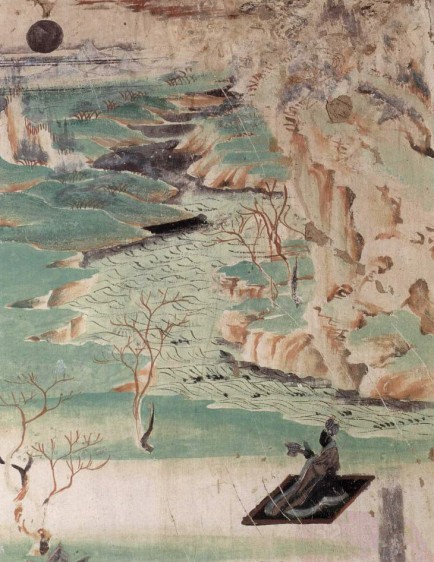
Those Israelites living in the Persian Empire, later, influenced parts of India, the home of Buddha and Buddhism. Moreover, the history of the Israelites, in relation to the Scythians, seems to bring us to the conclusion that the Buddha himself was also an Israelite.
However, how can we be sure that the Buddha himself was indeed a descendant of the Scythians and Israelites?
CLICK TO READ – The Scythian Israelites: Aryans in Africa and Abroad
also,
- VARIOUS HISTORIANS CONIFIRM THE ORIGINAL BUDDHA WAS NEGRO (WE KNOW THE NEGRO IS NOT FROM HAM BUT SHEM).
- THE FIRST BUDDHA, SHAKYAMUNI, IS FROM THE SHAKA/SAKA CLAN
- THE SHAKA CLAN WAS A BRANCH OF SCYTHIANS AND SCYTHIANS ARE KNOWN TO BE ISRAELITES.
THE HISTORIANS
The Mogao Cave’s of China were constructed by Black Buddhist-Israelite tradesmen skilled in megalithic stone sculpture

LFT: Oba carved altar tusk, Kingdom of Benin Edo peoples, RT: Berlin Golden Hat
Anacalypsis an Attempt to Draw Aside the Veil of the Saitic Isis or an Inquiry Into the Origin of Languages, Nations, and Religion, Volume 2, By Godfrey Higgins, PG 364

“I have said, Ye are gods; and all of you are children of the most High. But ye shall die like men, and fall like one of the princes.” – Psalm 82:6-7

LFT: Buddha ji gong 濟公活佛, RT: Benin Bronze figure with conical hat
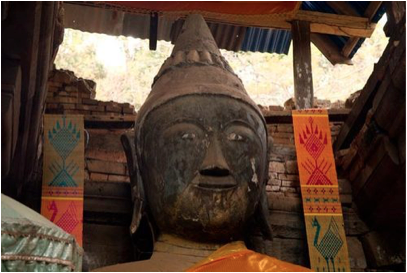
Tibetan Buddha with conical hat

Phoenician conical hat

KING JAMES ENGLAND AND ASIA KNEW BUDDAH WAS BLACKAMORE CALLED SHAKA
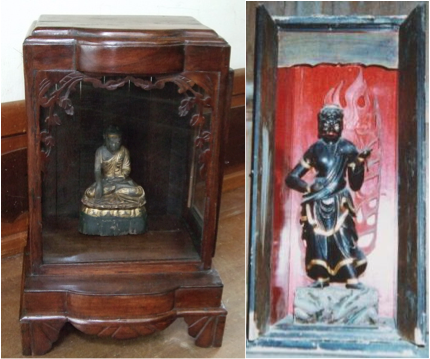
Another clear indication that the Buddha was Negro, besides these previous quotes, is from the fact that one of Buddhas names was Sambo.
“In Nepal, Colonel Kirkpatrick found Maha Muni, Maha Deo, or Buddha, under the name of Sumbo or Sambo Nath; that is, the Lord Sam Bo.” – The Asiatic Journal and Monthly Register for British India and Its …, Volume 1, On the religion of Buddha, PG 20
Sambo, the black racist stereotype, is actually the image of the black Buddha and many other eastern black gods. The black face and red lips of Sambo confirm his Negro origin.
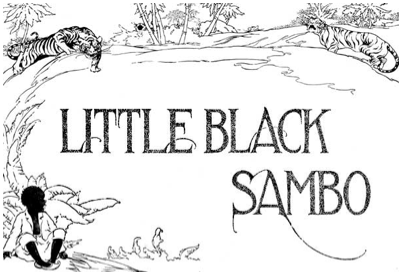


The Hungry Tigress Mogao Cave painting in Dunhuang, China. Sambo is also often depicted with Tigers
Whether Sambo/Buddha is identified as a Scythian or Dravidian is irrelevant in reference to his bloodline connection to the Israelites. Both Scythians and Dravidians are descendants of the biblical Israelites. They existed as different branches of the same Israelite families, migrating into foreign lands at different times. These separate branches ended up meeting each other again, many generations later, in India. However, the name Shakyamuni, another name for Buddha, points toward a Scythian origin for the Negro Buddha. Shakyamuni is a compound word from shakya, meaning shaka/saka/sacae or Scythian, and muni, meaning Sage/mystic or adept. Thus, Shakyamuni, the Negro Buddha Sambo, was known as the Sage/Mystic of the Scythians/Shakya clan.
The ‘peppercorn’ curled hair of the buddha statue resembles the curls on the ram statue of Meroe, Sudan.



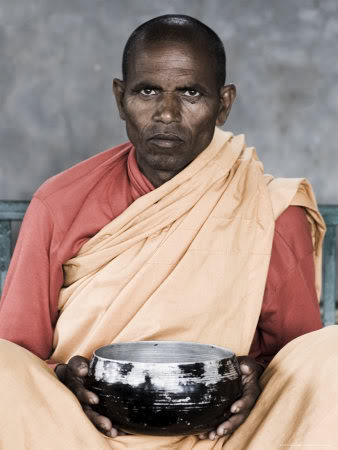

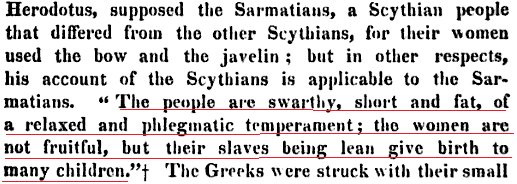
Universal geography, Volume 6, By Conrad Malte-Brun, PG 696

SHAYAMUNI BUDDHA IS FROM THE SHAKA (SCYTHIAN) CLAN
“Gautama Buddha was a member of the Shakya tribe.” – Shams-i-bala and the Historical Shambhala Kingdom,
“The Shakya were a clan of the Vedic period (1750–500 BCE). The name Śākya is derived from the Sanskrit word śakya, which means “the one who is capable”.” – Shakya, Wikipedia

Report of Tours in the Central Doab and Gorakhpur in 1874-75 and 1875-76, By A. C. L. Carlleyle, Sir Alexander Cunningham, PG 127
The History of Ancient Aryan Tribes in Sri Lanka: Yaksas, Nagas, Devas, Sakyas, by E. M. C. Amunugama, PG 275
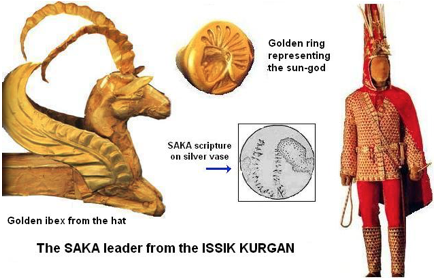

The Encyclopaedia Britannica, Volume 12, By William Harrison De Puy, T. S. Baynes, PG 789
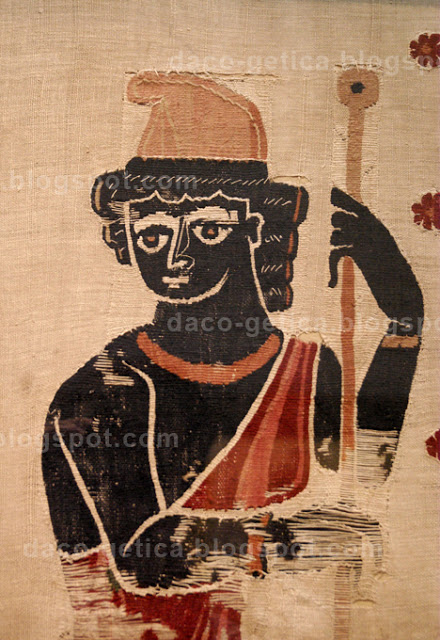
Greek scytha = Persian saka = Sanskrit shakya = Japanese shaka.” – Scythian Sages: Buddha
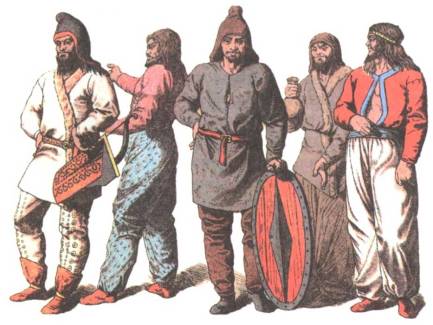

The Smurfs symbolize Black Scythians wearing the “Phrygian Cap”

LFT: Hausa Man of Nigeria with hat compared to RT: Chinese terra-cotta tomb soldier with similar hat
Chinese depiction of a “Western Barbarian” with two Ferghana “Heavenly Horses” (one of China’s earliest imported goods)
Report of Tours in the Central Doab and Gorakhpur in 1874-75 and 1875-76, By A. C. L. Carlleyle, Sir Alexander Cunningham, PG 132,126
The Buddha, of Scythian (Sakya/Saka/Sacae) origin, was also known to be a ‘Negro’ in his appearance. Scythians were descendants of Israelites who are also known to be, originally, ‘Negro’ in appearance. As a result, knowing the history of the lineal bloodline descent from the Israelites to Scythian/Sakya tribes makes it less surprising that Buddha would actually be Negro.
THE BUDDHA AND THE EARL Y BUDDHIST WERE ISRAELITES
In the book Anacalypsis Godfrey Higgins states that the Jews (of the Kingdom of Judah) of Asia minor were a tribe and colony of black Buddhistsfrom India.
“We must also remember that Solomon, an incarnation of wisdom, is closely connected withthe wisdom of the Buddhists… Thus we have the mount or house or habitation of Solomon or Solyma in India, or the country of Ioud, or of Daud-poutri, or of the sons of David; in Persia, the Madré Solyma, and the same also in Palestine and in Asia Minor; and all, in some way or other, connected with the tribe of Ioudi. Can any one believe all this to be the effect of accident? Solomon was the personification or incarnation of wisdom, and the Jews of Asia Minor were a tribe or colony from India, of black Buddhists, at or about the same time with the Ioudi to Syria, under the Brahmin.” – Anacalypsis an Attempt to Draw Aside the Veil of the Saitic Isis …, Volume 1, By Godfrey Higgins, PG 413-414
Notice the name of the monk, ARYA Subhuti, and compare it to the definition of ‘Aryan’ below. The Aryans and the Saka-Scythians were the same people, therefore, the Aryans/Arya were Israelites from the Assyria/Iran/Persia/India
The Buddha, of Scythian (Sakya/Saka/Sacae) origin, was also known to be a ‘Negro’ in his appearance. Scythians were descendants of Israelites who are also known to originally be ‘Negros’ in appearance. As a result, knowing the history of the lineal bloodline descent from Israelite to Scythian/Sakya tribes makes it less surprising that Buddha would actually be Negro. It should also now come as less of a surprise that the early Buddhist who helped spread the Buddhists religion worldwide were also Negro (Israelites).
W.E.B. Du Bois on Asia: Crossing the World Color Line, By William Edward Burghardt Du Bois, PG 10-11
Mogao Cave painting: Emperor Wu-di of Han worships the Buddha in Cave 323. Empire Wu of Han (156-87 B.C.), personal name Liu Che, was the 7th emperor of the Han Dynasty of China. Emperor Wu is cited in Chinese history as the greatest emperor of the Han Dynasty and one of the greatest emperors in Chinese History
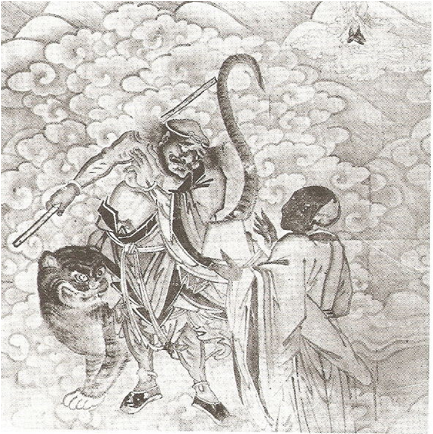
Tiger Lohan and Guanyin
Stele and documentary evidence shows the monks historically worshiped the Bodhisattva Vajrapani’s “Kimnara King” form as the progenitor of their staff and bare hand fighting styles.
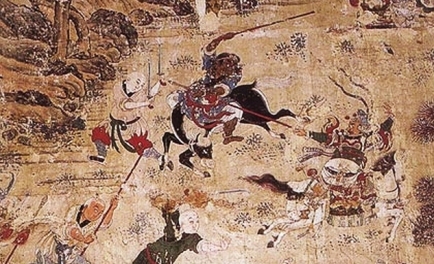
Wang Kimnara 散支大将
Huineng (638–713 AD), known in Japanese as Daikan Enō and in Korean as Hyeneung, was a Chinese Chán (Zen) Buddhist monk who is one of the most important figures in the entire tradition
Moreover, many of the men who translated certain Sanskrit text into Chinese, Korean and Japanese languages, were originally from the Parthian Empire.
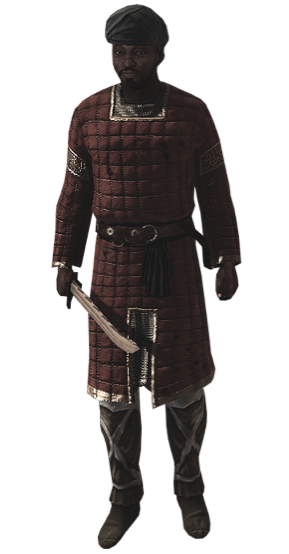
A Parthian (Iranian) Soldier. Parthians claim Scythian descent and Scythians were Israelites. The Scythians and Persian also referred to themselves as Arya/Aryan
Rediscovering Japan, Reintroducing Christendom: Two Thousand Years of Christ History in Japan, By Samuel Lee, PG 13
Eastward migrations of the Northern Kingdom of Israel into Iran/Media and further east, along the Silk Road, into China, Korea & Japan
- An Shih Kao, was a Parthian prince, who made the first known translations of Hinayana Buddhist texts into Chinese (148–170).
- An Hsuan, was a Parthian merchant who became a monk in China 181 AD.
- Tan-ti (c.254), a Parthian monk.
- An Fajin (281–306), a monk of Parthian origins.
A map from Allen Howard Godbey’s Lost Tribes a Myth, page 366, marking some of the known Israelite populations found from Palestine to China (the Far East)
The Parthian Empire was a Persian kingdom in the Northeast of Iran. Persia is known to have a history of Negroid Dynastic rulers whose appearance in Persia is said to have corresponded with the arrival and conquest of the Scythians. Again, it should be remembered that the Scythians were Israelites. These Israelites later travelled into India, founding many different lineages. One of these lineages brought us Shakyamuni Buddha; the pagan Israelite Sambo. The Israelite Buddhists who helps translate and spread Buddhism are one of the many ways that Israelites arrived in the Far East. For more understanding on the Israelite presence in the Far East be sure to read the following related topics:
The Indians of the Americas are Israelites
The Sidelock of Silence and Mysteries of Immaturity
Shennong: The Israelite Inventor of Chinese Culture
The Aryan-Scythians were Israelites
Further Research:
Shabbat Shalawam Singapore, China & Indonesia, There Are Many Israelites Among You
Image Of A Bodhisattva (Enlightened One) In China
谁是美洲黑人说的 Hebrew Israelites (希伯来的伊斯拉埃利特)?
“Japanese” and “Portuguese” Israelites That Look Like The Heathen (non-Israelite) Nations



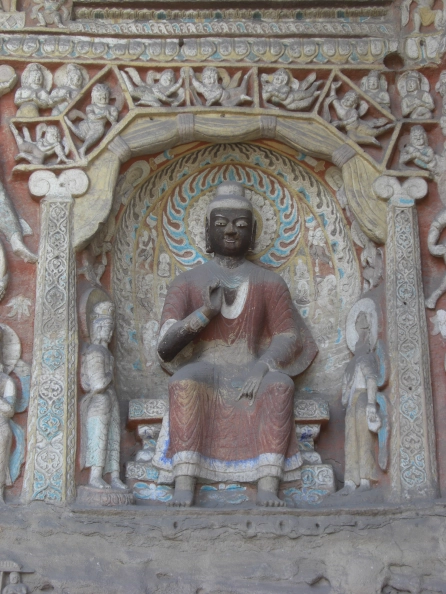
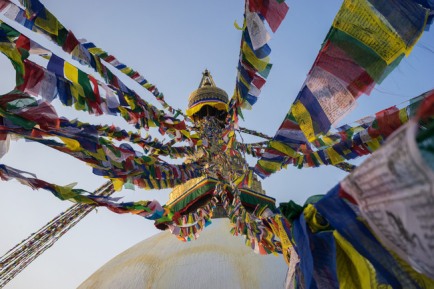

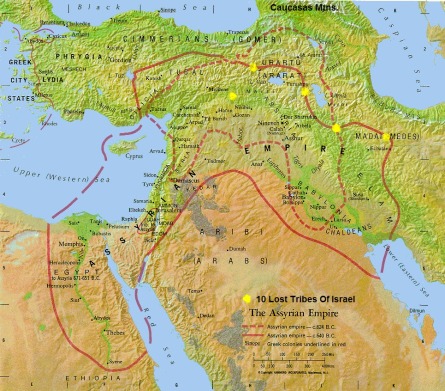
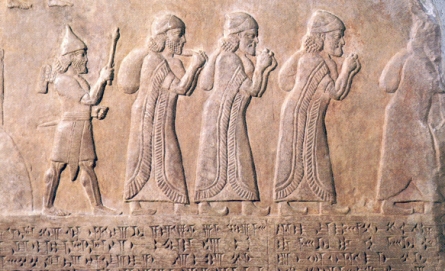
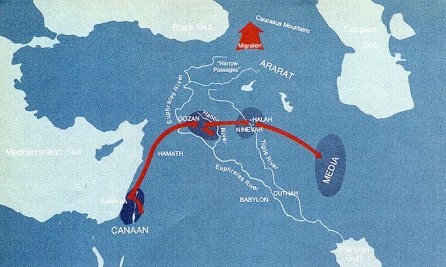
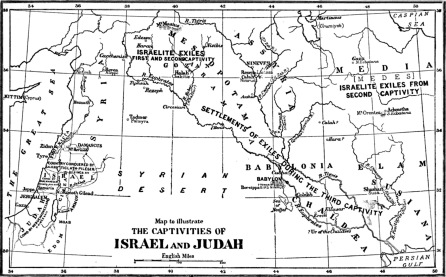
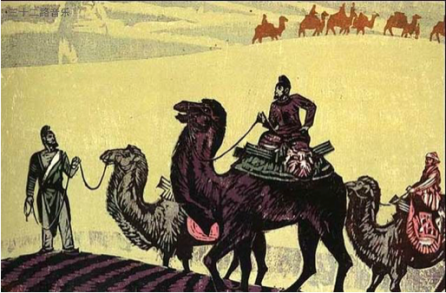

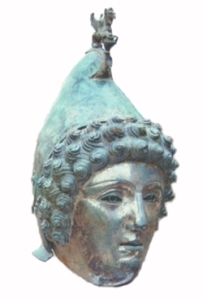

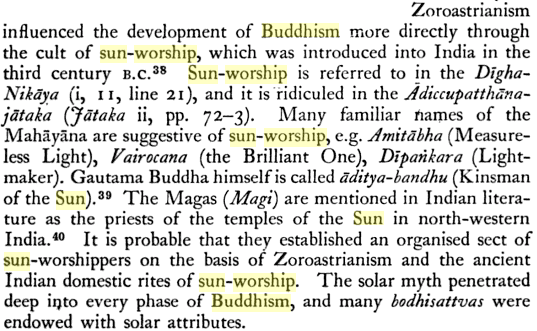

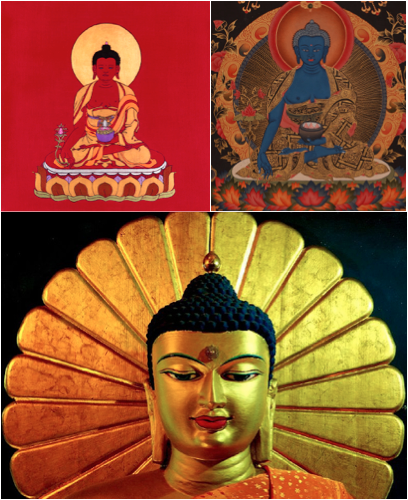

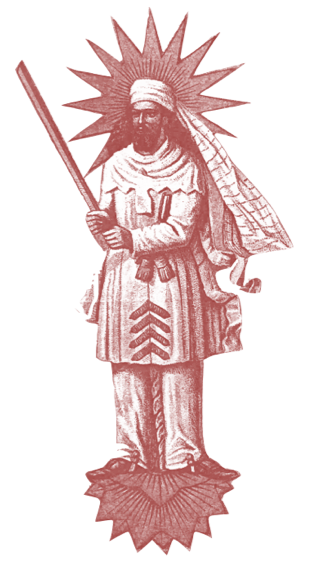

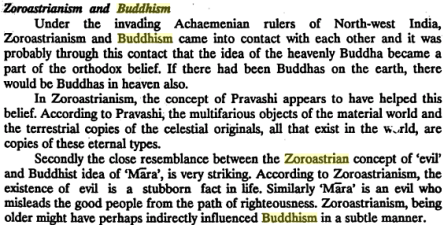
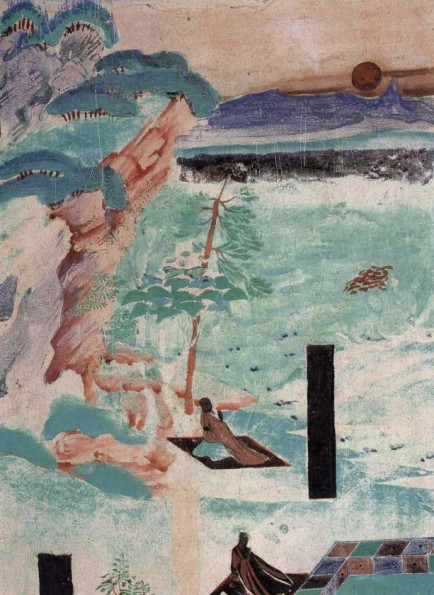


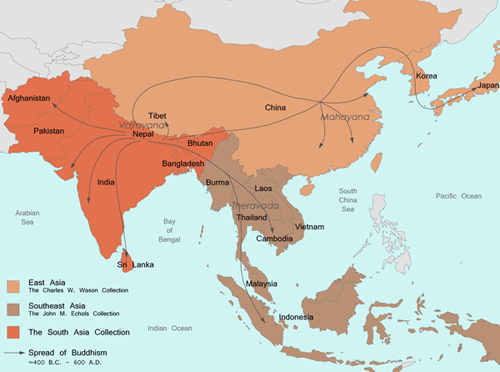









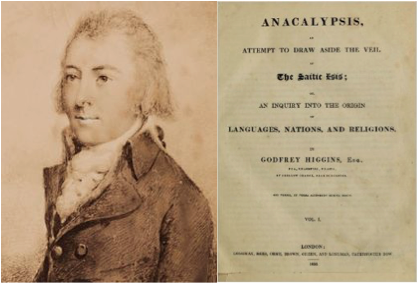
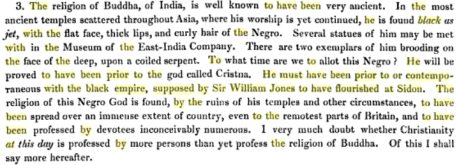

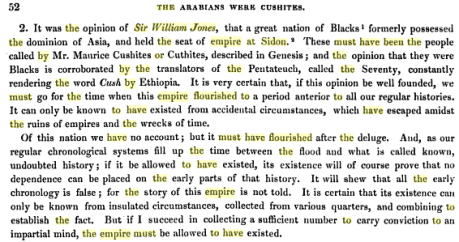






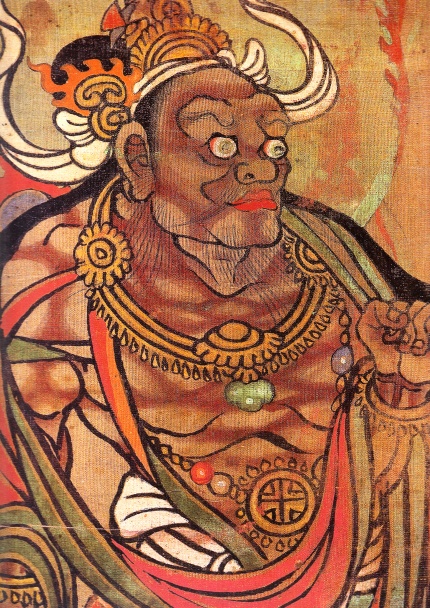

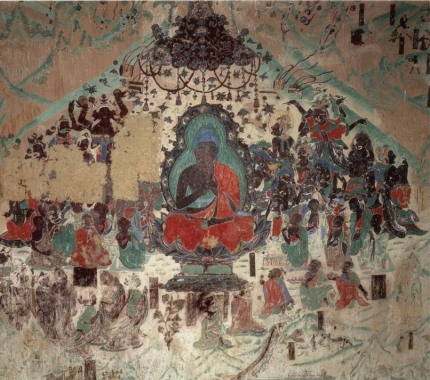
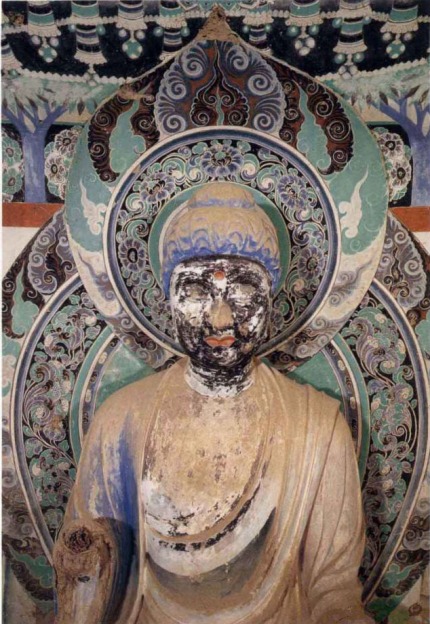

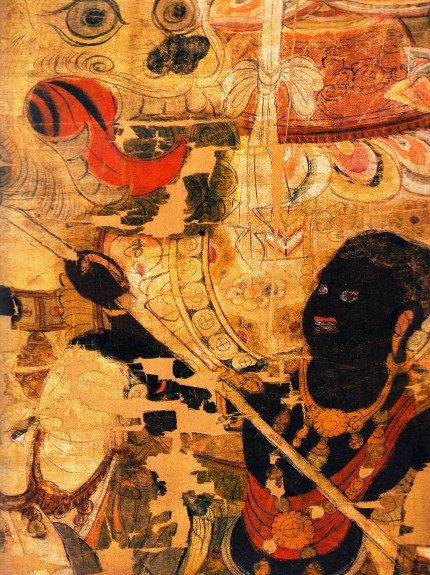

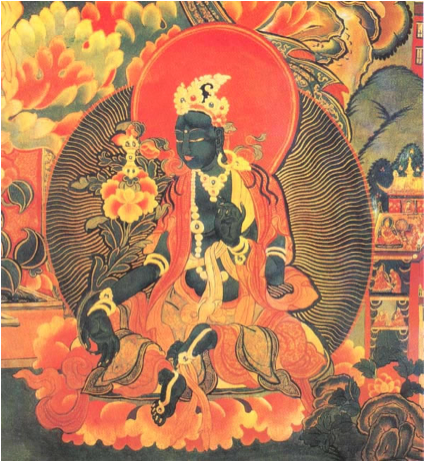

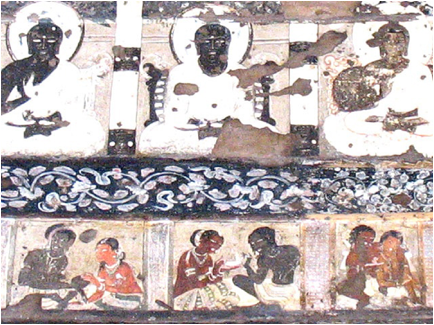
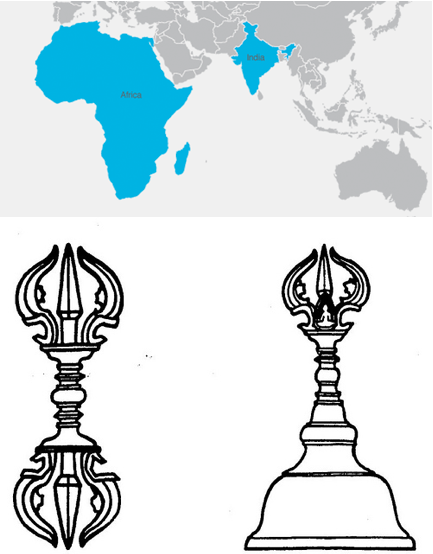




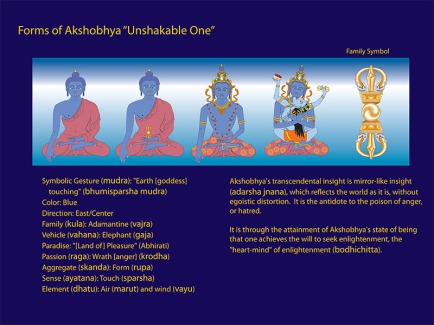

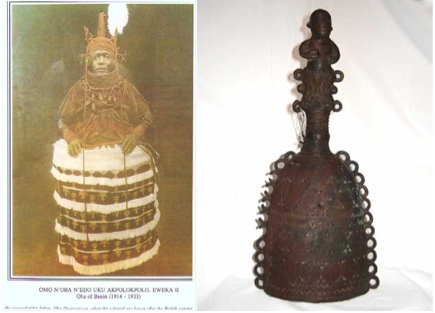
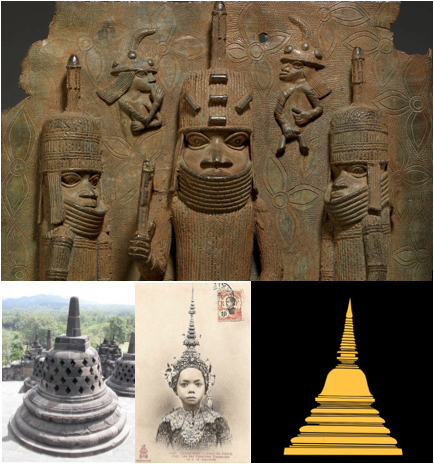
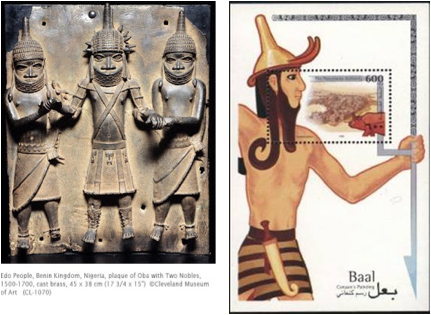

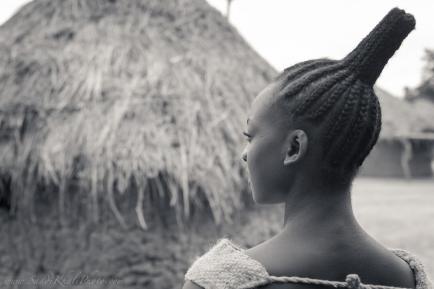

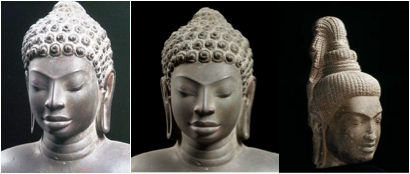

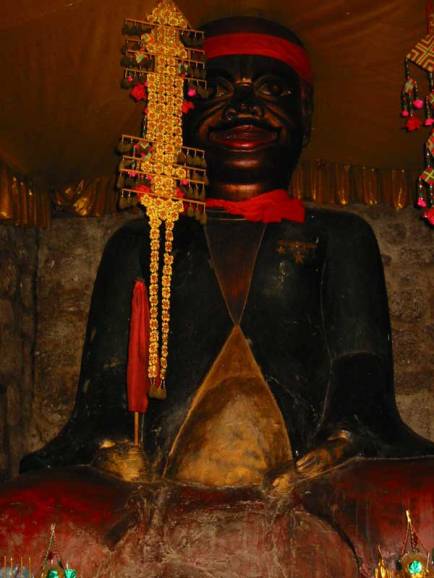




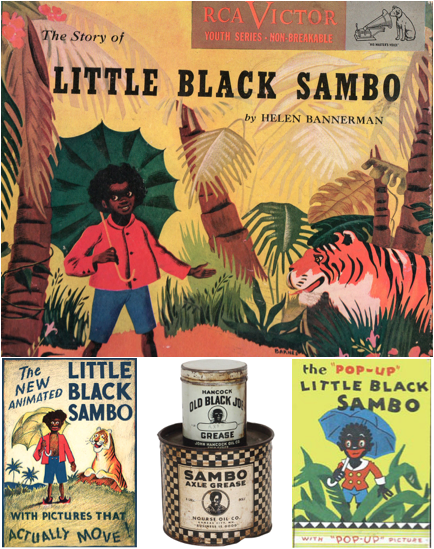







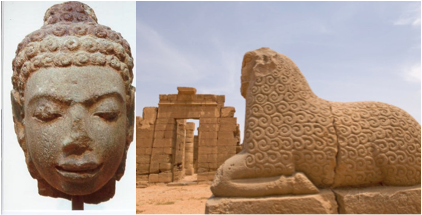




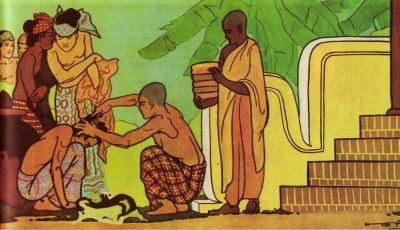





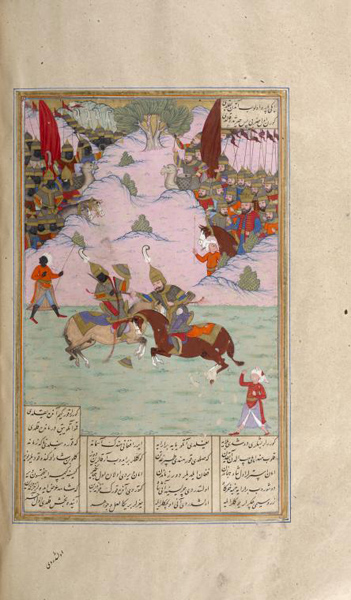
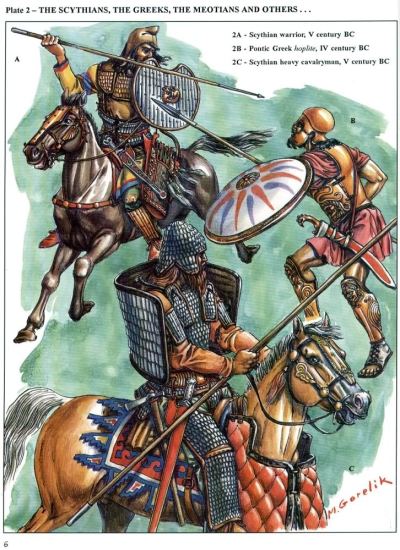
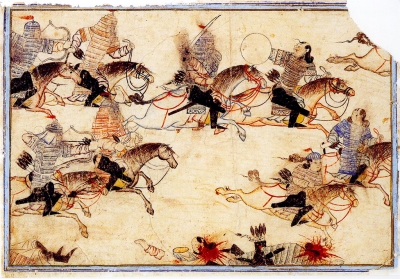
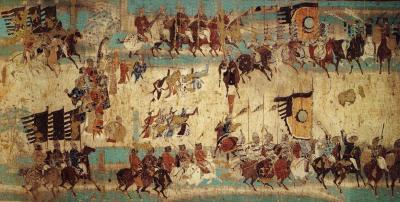
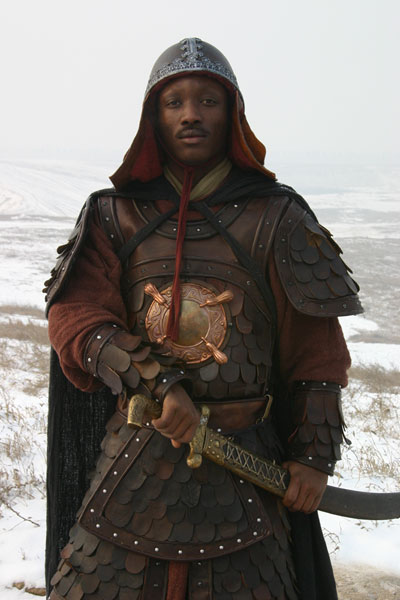

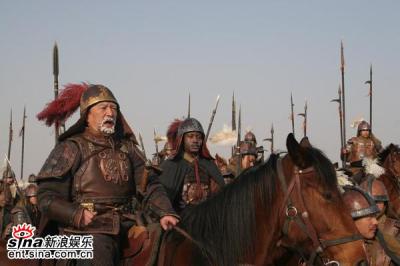



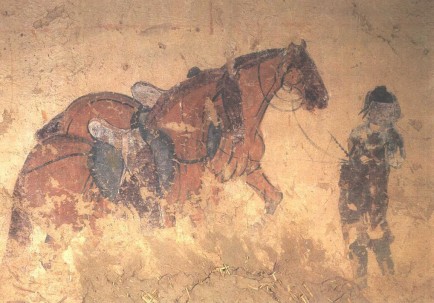
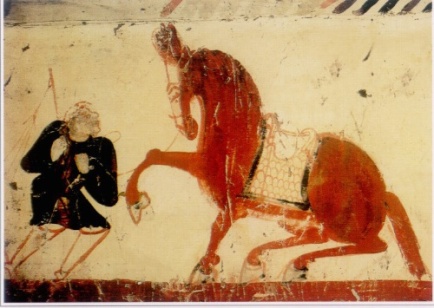



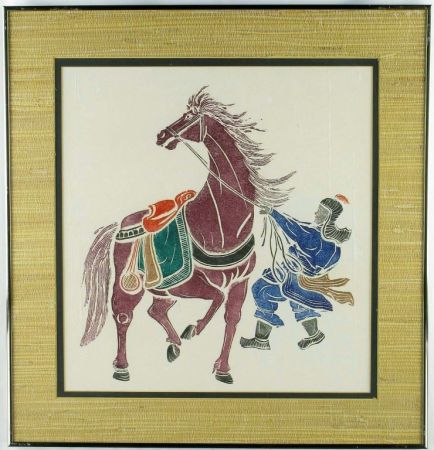
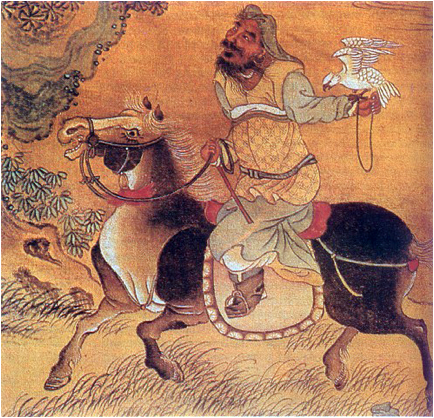
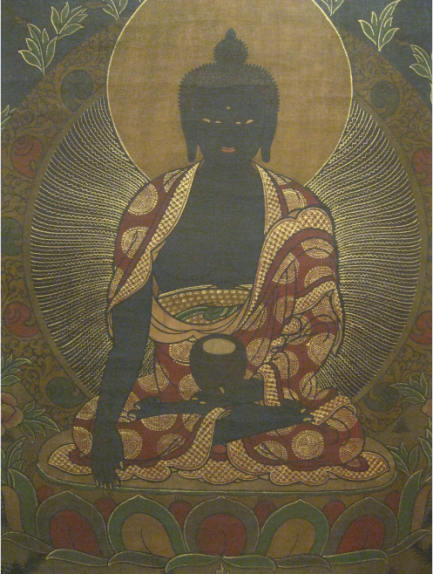

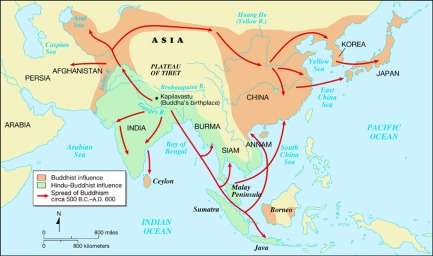







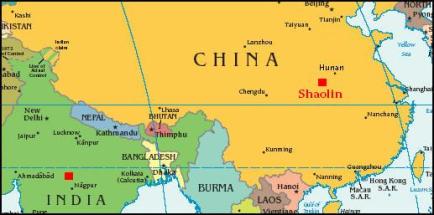
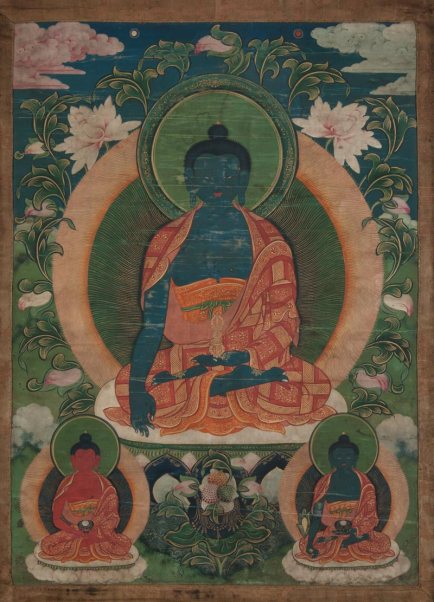

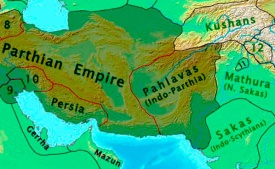 CLICK HERE to view interactive map
CLICK HERE to view interactive map






